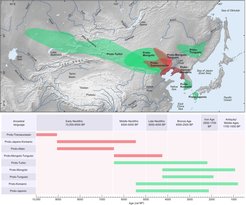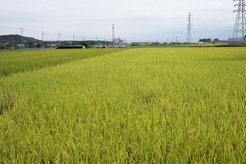Climate Change Shaped the Spread of the Transeurasian Languages
New research traces the impact of climate change on language dispersal across Northeast Asia over the past 9,000 years

How has climate change shaped human history — not only through migration and subsistence, but through the very languages spoken across vast regions? This question is central to a recent contribution by an international research team to the special issue From climate change to language change: how climate impacted language dynamics in the Holocene in Quaternary Environments and Humans, edited by Martine Robbeets. Drawing on case studies from around the world, the volume examines how climate shifts over the past 10,000 years have influenced language dynamics.
One study in the volume, led by Prof. Martine Robeets and Dr. Christian Leipe of the Max Planck Institute of Geoanthropology, focuses on the Transeurasian languages — Japonic, Koreanic, Tungusic, and Mongolic — now spoken across much of Northeast Asia. The researchers set out to determine whether and how climate change contributed to the spread of these languages, from their common origin in the West Liao River region around 9,200 years ago to their present-day geographic distribution.
Key Findings: Climate as a Driver of Language Spread

The researchers concluded that global and regional climate trends were key factors in the dispersal of the Transeurasian languages. Periods of climate change shaped agricultural opportunities in Northeast Asia, influencing patterns of human movement and ultimately facilitating the spread of both crops and languages.
While previous explanations for language dispersal often emphasized social, political, or cultural drivers, this study shows that environmental change also played a decisive role. The findings underscore the importance of integrating climate history into broader narratives of human development and language evolution.
An Interdisciplinary Approach
The researchers employed a method referred to as ‘triangulation’, which integrates data from various fields in order to manage gaps in information. In this case, the triangulated fields were linguistics, archaeobotany, and palaeoclimatology.
The process of triangulation unfolds in four steps:
- Independent Analysis: Each discipline conducted its own data collection and analysis independently, to avoid circular reasoning.
- Alignment of Quantitative Variables: The team then aligned key variables — such as time depth, spatial distribution, and expansion direction — across datasets tracking language dispersal, crop diffusion, and climate trends.
- Alignment of Qualitative Variables: Proto-language vocabularies were reconstructed to identify words related to agriculture, providing insights into the agricultural knowledge of ancestral language communities. These linguistic findings were compared with archaeobotanical evidence of ancient crop remains and palaeoclimate reconstructions. At this stage, cross-disciplinary consistency strengthens confidence in the results.
- Cause-Effect Determination: Finally, the researchers integrated the aligned evidence into a holistic narrative, identifying the most plausible causal chain: climate change drove agricultural expansion, which in turn facilitated the spread of the Transeurasian languages across Northeast Asia.
Looking Ahead
The implications of the research extend well beyond historical linguistics. First, the study highlights the links between language dynamics and climate change in the past, illuminating the challenges that languages and communities face today under accelerating climate pressures.
Second, the project offers a model for the humanities to contribute meaningfully to climate studies. This study demonstrates the value of combining linguistic evidence with insights from palaeoclimatology and archaeobotany in reconstructing human-environment interactions.
Finally, the findings also bring new evidence to a long-standing debate about the origins and dispersal of the Transeurasian languages. The interdisciplinary synthesis presented by the team lends new weight to the theory of a common origin and a spread associated with agricultural expansion, offering a more robust and nuanced understanding of the region’s linguistic history.













